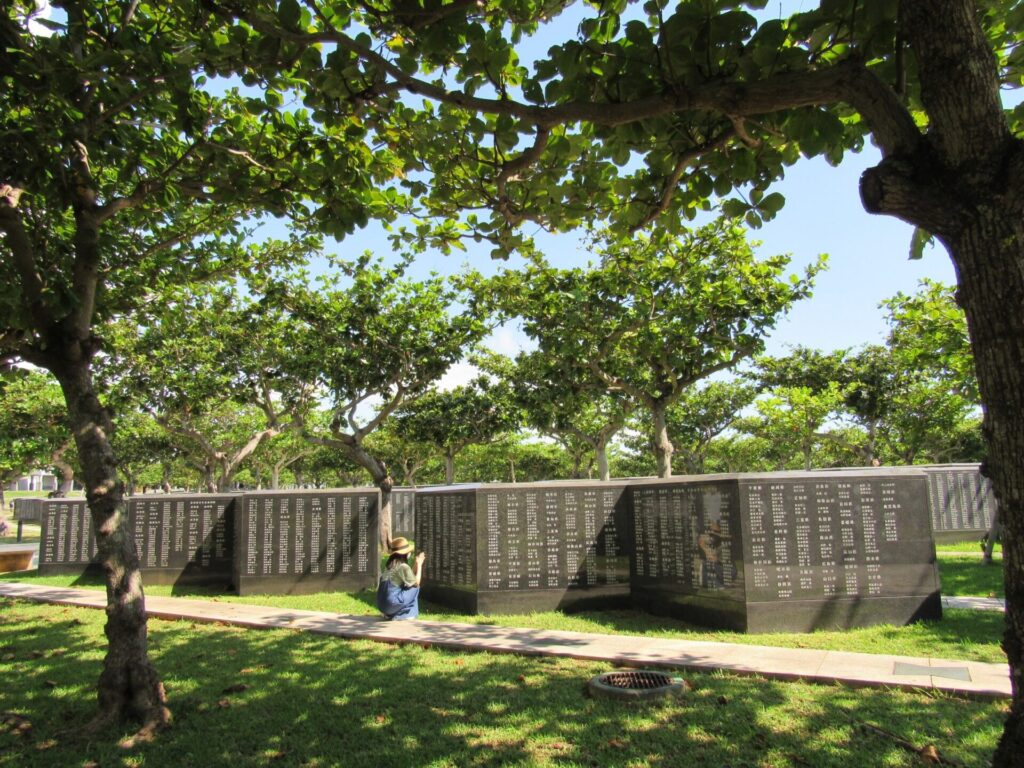Cornerstone of Peace

In 1995, 50 years after the end of the Battle of Okinawa, the names of all war victims were inscribed on the stone screens that constitute this large monument in Mabuni, Itoman.
Approximately 230,000 people died during the war including locals, former Japanese military personnel, American and British military personnel, people forcibly brought to Okinawa from the Republic of Korea, North Korea, and Taiwan during the war. The names of all known victims are inscribed on the screens. Although the Cornerstone of Peace was inspired by other monuments, such as the Vietnam Veterans Memorial in Washington DC, it was founded on the idea of inscribing every name equally, regardless of which side they were on.
Okinawa became the harshest battleground at the end of the Asia-Pacific War. Severe battles continued and inevitably involved the locals on such a small island, with the American military advancing with their massive weaponry while the former Japanese military tried to slow down the advance.
Many bereaved families and visitors have visited the monument since the inauguration ceremony was held on June 23rd, 1995, which also marks the annual Okinawa Memorial Day. In Mabuni, the prefectural war monuments of mainland Japan were everywhere, as if competing with one another. Okinawa was the only one of Japan’s 47 prefectures to have no monument in the area, therefore in recent years, the Cornerstone of Peace seems to function as its war monument, a place for mourning Okinawa’s losses. The bereaved cannot know when, where, and how their family member(s) died, as the battle was so destructive, therefore they consider June 23rd as the date of their death, and Mabuni to be the location where this occurred.
The stone screens of the Cornerstone of Peace are divided into two sections. Walking towards the sea from the entrance, the screens on the right-hand side feature the names of American and British military personnel, as well as people from the Republic of Korea, North Korea, and Taiwan. On the left-hand side are screens with the names of Okinawan people. Standing among screens, one can begin to realize how the battle took the lives of many civilians including women, children, and elders. The names of the soldiers show that they were all male, but the war killed the civilians equally, regardless of their gender or age. This fact is inscribed with clarity on the Cornerstone of Peace.
The principle of inscribing the names regardless of their origin was praised by both Okinawans and others alike. However, there are still some remaining issues. The names include the Okinawans killed during the entire Fifteen-Year War (the Asia-Pacific War starting in 1931, the year of the Manchurian Incident), which may contradict its idea of inscribing the names of those who died at the Battle of Okinawa (April to June 1945). Another issue is that the names of many people from The Republic of Korea and North Korea are not yet inscribed. There are still large empty spaces saved for their names, and we must keep adding more names with sincerity, regardless of how long it takes.
During the war, Okinawa lost the largest number of residents in Japan, yet we must remember that while Okinawa suffered greatly in the war, there were times it also made others suffer.









































































































































































































































